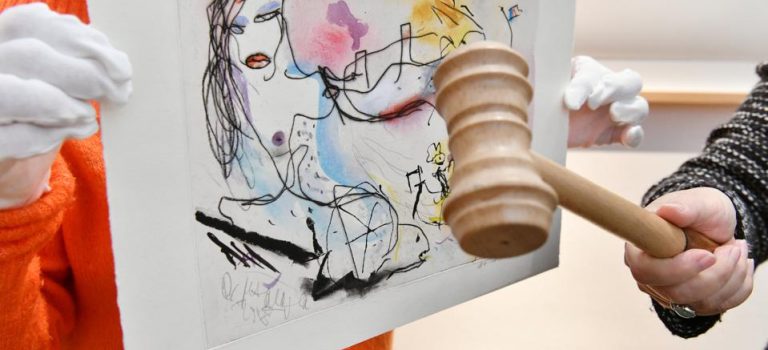Source: Forbes.
Despite the economic chaos the world is going through right now, the art market continues to prove that it can exceed expectations. Despite this, art and collectible is often ignored when estate plans are drafted, which may lead to extra costs and possible “fire sales” of artwork in an estate. To avoid this, there are three basic steps every collector should consider as part of the estate plan.
Despite the economic and social chaos the world is going through right now, the art market continues to prove that it can exceed expectations. Galleries, in-person shows and auctions may be closed, but online auctions continue to impress. Artprice, in a recent article noted that, in online auction, Sotheby’s alone had seven of the eight auction results that exceeded $1 million.
This shows again how the art market, and the collectibles market in general, can be non-correlated to the stock market. This means that, for estate and financial planners, art and collectibles will become an increasing percentage of their client’s net worth. Despite this, art and collectible is often ignored when estate plans are drafted, or only treated as an afterthought. This will lead to extra costs and possible “fire sales” of artwork in an estate. To avoid this, there are three basic steps every collector, and their advisor, should consider as part of the estate plan: Inventory the collection, aggregate the collection, and manage the collection.
Inventory: Know what is in the Collections
Most clients do not have a current inventory of their tangible assets other than in their heads; or if the inventory does exist, it is lacking critical information or is badly out of date. Inventories for insurance or estate taxation often are geared towards minimizing the estate tax value or the premium costs of the asset, and are rarely complete or sufficiently detailed.
Aggregate: Simplify the Collections for others to Handle.
Even when all of the significant tangible property is clearly inventoried, researched, labeled, and stored, your client will most likely be confronted with a large number of items, less valuable art, coins, gemstones, jewelry, furniture, or other decorative collectibles and the associated masses of documents, catalogs, notes, letters, bills of sale, and paperwork.
A critical first step is aggregating items, and their associated paperwork, with similar characteristics into groups based certain rules or guidelines such as taxes, recognition, and liquidity premium as well as your client’s desires.
Management: Continuing the Collection when the Client is no Longer Able to Do So.
As an adviser you may not play an active role in the buying and selling of art and other collectibles, but you need to support your clients in managing their tangible property. Ask the following questions:
· Does your client understand the buy-sell discipline for their ownership of artwork?
· Does your client’s personal representative readily know how to maintain and ultimately dispose of any artwork in your client’s estate?
· Does your client have insurance policies or funds from the estate that can help alleviate the burden of additional administrative and tax costs for the tangible assets?
· Does your client keep their purchase and sale inventory records?
· Has your client specifically addressed in his or her Will the disposition of any copyrights your client may own?
· Does your client have specific instructions or restrictions on how items may be used or licensed?
· Has your client made arrangements for the maintenance and storage of the tangible assets in the estate?
· Has your client considered the use of split interest trusts and charitable foundations as helpful vehicles by which to manage art?
By having an inventory their tangible assets, simplifying their collection process through aggregation, and managing their treasures your clients can pass on a joy rather than a nightmare.








